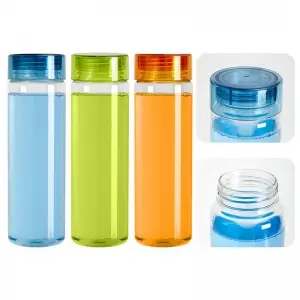Plastic bottles have become part of our daily life. From post-workout gulps to sipping on our favorite beverages, these convenient containers are a popular choice for packaged beverages. However, the problem of plastic waste and its impact on the environment cannot be ignored. In this blog, we dive into the world of plastic bottles, explore their recycling process, and reveal how many plastic bottles are actually recycled each year.
Scope of the problem:
Plastic pollution is a global problem, with more than 8 million tons of plastic entering the ocean every year. The vast majority of this waste comes from single-use plastic bottles. These bottles can take up to 450 years to decompose and contribute to the growing environmental crisis we face. To solve this problem, recycling has become a key solution.
Recycling process:
The recycling process for plastic bottles involves several steps. First, the bottles are collected through domestic recycling bins, dedicated collection points or waste management systems. These bottles are then sorted by plastic type using specialized machines. After sorting, they are washed and torn into small pieces, forming plastic flakes or pellets. These flakes are then melted, reprocessed and used to produce a variety of plastic products, reducing the need for new virgin plastic.
Plastic Bottle Recycling Statistics:
Now, let’s dig into the numbers. According to the latest figures, approximately 9% of all plastic waste generated globally is recycled. Although the proportion may seem relatively small, billions of plastic bottles are diverted from landfills and incinerators every year. In the US alone, some 2.8 million tons of plastic bottles were recycled in 2018, an impressive 28.9% recycling rate. These recycled bottles are turned into new bottles, carpet fibers, clothing, and even auto parts.
Factors affecting the recycling rate of plastic bottles:
While plastic bottle recycling has made great strides, several factors are holding back higher recycling rates. One of the main factors is the lack of public awareness about the recycling process and the importance of recycling. Inadequate collection and classification infrastructure also poses challenges, especially in developing countries. Additionally, recycled plastic products are often of lower quality than virgin plastic, which discourages some manufacturers from using recycled materials.
Steps towards a sustainable future:
In order to achieve a more sustainable future, it is essential that individuals, governments and businesses work together. Raising public awareness of the importance of recycling, improving waste management systems, and investing in research and development of innovative recycling technologies are important steps in overcoming these challenges. Additionally, supporting legislation that promotes the use of recycled plastics in manufacturing can create demand for recycled materials and reduce reliance on virgin plastics.
Final thoughts:
Plastic bottle recycling offers a ray of hope in the fight against plastic pollution. While this number may be small compared to the vast amount of plastic produced, the positive environmental impact of recycling cannot be underestimated. By focusing on educating the masses, strengthening recycling infrastructure, and increasing cooperation, we can gradually increase the number of plastic bottles recycled each year. Together, let’s create a world where plastic bottles don’t end up as waste, but instead become the building blocks of a more sustainable future.
Post time: Jul-25-2023
